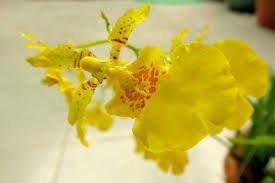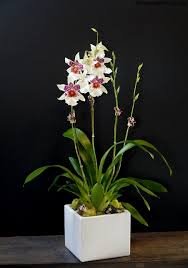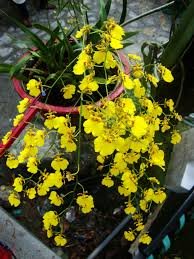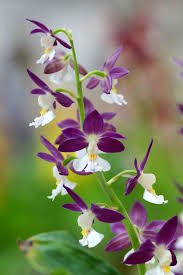# Are Oncidium Orchids Easy to Grow for Beginners?
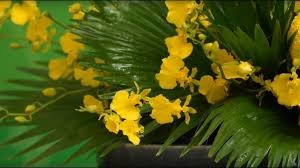
Oncidium orchids, commonly known as “dancing lady orchids,” are cherished for their vibrant colors and intricate flower formations. These exquisite plants, native to tropical regions of the Americas, have gained popularity among orchid enthusiasts worldwide. However, a common question arises among beginners: are Oncidium orchids easy to grow? This comprehensive guide will delve into the cultivation requirements, care tips, and potential challenges of growing Oncidium orchids, helping beginners decide if these stunning plants are the right fit for their gardening journey.
## Understanding Oncidium Orchids
### Botanical Characteristics
Oncidium orchids belong to the Orchidaceae family and encompass over 300 species and countless hybrids. Their flowers are known for their unique shapes and bright colors, which can range from yellow and orange to purple and white. The flower spikes can produce multiple blooms, making them a stunning addition to any indoor or outdoor garden.
### Growth Habits
Oncidium orchids are epiphytic plants, meaning they typically grow on other plants rather than in soil. In their natural habitats, they thrive on tree branches, benefiting from the dappled sunlight and humid conditions of tropical forests. Understanding their growth habits is essential for replicating their natural environment when cultivating them at home.
## The Appeal of Oncidium Orchids for Beginners
### 1. Unique Aesthetics
One of the most appealing aspects of Oncidium orchids is their stunning visual display. Their elaborate flowers can brighten up any space, making them a popular choice for those looking to enhance their home or garden decor.
### 2. Varied Species and Hybrids
With so many species and hybrids available, beginners can choose from a wide range of options that suit their aesthetic preferences and growing conditions. This diversity allows for a personalized gardening experience, enabling beginners to explore different varieties and colors.
### 3. Potential for Success
Many beginners find success with Oncidium orchids due to their relative adaptability. While they require specific care, their resilience and ability to thrive in various conditions can lead to rewarding growing experiences.
## Basic Growing Requirements for Oncidium Orchids
### 1. Light Requirements
Light is a critical factor for the growth of Oncidium orchids. These plants thrive in bright, indirect sunlight.
– **Ideal Light Levels**: Aim for approximately 1,000 to 2,500 foot-candles of light. This amount can be achieved by placing the orchids near east or west-facing windows, where they can receive morning or late afternoon sunlight without being exposed to the harsh midday sun.
– **Signs of Insufficient Light**: If the leaves turn dark green and the plant appears leggy, it may not be receiving enough light. Conversely, yellowing leaves may indicate too much direct sunlight.
### 2. Temperature Preferences
Oncidium orchids prefer warm temperatures, making them suitable for indoor growing.
– **Daytime Temperatures**: Ideal daytime temperatures range between 70°F to 85°F (21°C to 29°C).
– **Nighttime Temperatures**: At night, temperatures can drop to around 60°F to 70°F (15°C to 21°C). This temperature fluctuation is essential for encouraging flowering.
### 3. Humidity Requirements
Humidity is crucial for the health of Oncidium orchids, as they thrive in moist environments.
– **Optimal Humidity Levels**: Aim for humidity levels between 40% and 70%. If the air in your home is too dry, consider using a humidifier or placing a tray of water near the orchids to increase humidity.
– **Misting**: Lightly misting the orchids can also help maintain humidity, but avoid over-saturating the leaves, as this can lead to fungal issues.
### 4. Watering Practices
Watering is one of the most critical aspects of caring for Oncidium orchids.
– **Watering Schedule**: Oncidium orchids prefer to dry out slightly between waterings. Typically, watering every 5 to 7 days is sufficient, but this can vary depending on environmental conditions. Always check the moisture level of the potting medium before watering.
– **Water Quality**: Use distilled or rainwater when possible, as tap water may contain chemicals that can harm the orchids. Ensure that the potting medium is well-draining to prevent root rot.
### 5. Potting Medium
Choosing the right potting medium is essential for the successful growth of Oncidium orchids.
– **Recommended Mix**: A mix of bark, perlite, and sphagnum moss is ideal for Oncidium orchids. This combination provides good aeration and drainage while retaining some moisture.
– **Repotting**: Repotting should be done every 1 to 2 years, ideally after flowering, to refresh the potting medium and encourage healthy root growth.
## Growing Oncidium Orchids: Step-by-Step Guide for Beginners
Now that we understand the basic requirements for growing Oncidium orchids, let’s break down the step-by-step process for beginners.
### Step 1: Selecting Your Orchid
When choosing your Oncidium orchid, consider the following:
– **Reputable Sources**: Purchase from reputable nurseries or garden centers to ensure you receive a healthy plant.
– **Variety Selection**: Look for a variety that suits your aesthetic preferences and fits your growing conditions. Some popular hybrids include Oncidium ‘Sharry Baby’ and Oncidium ‘Dancing Lady.’
### Step 2: Preparing the Growing Environment
Create an ideal environment for your Oncidium orchid:
– **Location**: Select a location with bright, indirect sunlight and stable temperatures.
– **Humidity and Temperature**: Use a hygrometer to monitor humidity levels, and adjust as necessary. Ensure that temperatures remain within the preferred range.
### Step 3: Potting Your Orchid
Pot your Oncidium orchid using the following steps:
– **Choose the Right Pot**: Select a pot with drainage holes to prevent waterlogging.
– **Prepare the Medium**: Mix bark, perlite, and sphagnum moss to create the potting medium.
– **Planting**: Place the orchid in the pot and fill it with the potting mix, ensuring the roots are well-supported but not buried too deep.
### Step 4: Watering and Feeding
Establish a watering and feeding routine:
– **Watering**: Water your orchid thoroughly, allowing excess water to drain out. Follow the 5 to 7-day schedule, adjusting based on environmental conditions.
– **Fertilizing**: Use a balanced orchid fertilizer diluted to half strength every 4 to 6 weeks during the growing season (spring and summer).
### Step 5: Monitoring and Maintenance
Regularly monitor your orchid for signs of health and stress:
– **Leaf Inspection**: Check for yellowing, wilting, or browning leaves, which may indicate issues with light, water, or temperature.
– **Pest Control**: Watch for pests such as aphids, mealybugs, and scale. If detected, treat them promptly with insecticidal soap or neem oil.
### Step 6: Encouraging Blooms
To encourage blooming, ensure your orchid experiences temperature fluctuations:
– **Cool Nights**: Provide cooler nighttime temperatures to trigger flowering. This can be achieved by adjusting indoor heating or placing the orchid near a draft-free window.
## Common Challenges and Solutions for Beginners
While Oncidium orchids are relatively easy to grow, beginners may encounter some challenges. Here are common issues and their solutions:
### 1. Overwatering
Overwatering is one of the most common mistakes made by beginners.
– **Symptoms**: Yellowing leaves and a mushy root system indicate overwatering.
– **Solution**: Allow the potting medium to dry out before watering again, and ensure the pot has good drainage.
### 2. Insufficient Light
If your Oncidium orchid is not receiving enough light, it may exhibit poor growth and reduced blooming.
– **Symptoms**: Dark green leaves and leggy growth are signs of inadequate light.
– **Solution**: Move the orchid to a brighter location with indirect sunlight. Consider using grow lights if natural light is limited.
### 3. Pests and Diseases
Oncidium orchids can be susceptible to pests and diseases, particularly in high humidity environments.
– **Common Pests**: Aphids, spider mites, and mealybugs can harm the plant.
– **Solution**: Inspect your orchids regularly and treat any infestations promptly using appropriate pest control methods.
### 4. Nutrient Deficiency
Nutrient deficiencies can hinder the growth and blooming of Oncidium orchids.
– **Symptoms**: Poor growth and yellowing leaves may indicate a lack of nutrients.
– **Solution**: Use a balanced orchid fertilizer every few weeks during the growing season to replenish nutrients.
## Conclusion
Oncidium orchids can be a rewarding choice for beginner gardeners. With their stunning blooms and relatively adaptable nature, they offer the chance to experience the beauty of orchids without overly complicated care requirements. By understanding their basic needs—light, temperature, humidity, watering, and potting medium—beginners can create an optimal environment for growth.
While there may be challenges along the way, the satisfaction of successfully nurturing an Oncidium orchid and witnessing its breathtaking blooms is well worth the effort. With proper care and attention, these charming orchids can thrive, bringing joy and beauty to any home or garden. So, if you are a beginner looking to embark on your orchid-growing journey, Oncidium orchids may just be the perfect fit for you. Happy gardening!



